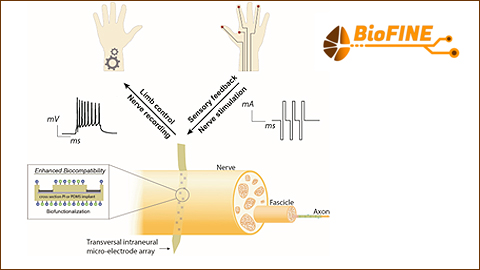The Group of Neuroplasticity and Regeneration of the UAB, led by Professor Xavier Navarro, participates in the European project BioFINE (BioFunctional IntraNeural Electrodes). The aim is to enhance biocompatibility of intraneural electrodes for bionic limbs as a multi-dimensional bio-chemical-engineering challenge. The project is funded by the European Innovation Council within the Horizon-EIC-2022-Pathfinder Open program.

After traumatic limb loss, electrically innervated bionic limbs help patients gain independence and improve their quality of life beyond what is possible with more conventional prostheses. However, their insufficient long-term integration with the patient's own nervous system is a remaining barrier to broader clinical use. The astonishing potential of bionics to use finer details in nerve signaling patterns for limb control, or to provide bionic limbs with artificial sensory function, can only truly come to patient benefit when this performance remains over many years.
New micro- and nanofabrication processes pretend to improve these limitations by shaping implants and interconnections with individual features below one micron. This methodology makes it possible to greatly reduce the impact implants have on the surrounding tissue. To further enhance tissue integration, implants will be dressed in bio-functional coatings that release anti-inflammatory drugs or act as biomimetic interfaces to improve cell-surface interaction. Researchers long-term vision is to develop the first intraneural high channel-count interface capable of harvesting/injecting signals for motor control and sensory feedback to prosthetic limbs while designed to operate over decades.
The project started on 1 April 2023 and relies on the close interaction among scientists working at the University of Freiburg and Chalmers University of Technology developing the implants, the University of Ferrara developing a new methodology for implant biofunctionalization, and the Universitat Autònoma de Barcelona, analyzing the effect of these new implant concepts on the performance in the nerve.
The ultimate goal is to have a combined approach to bridge the gap from electrodes to nerves and generate a long-term functional peripheral nerve interface that can benefit patients in the long term.






